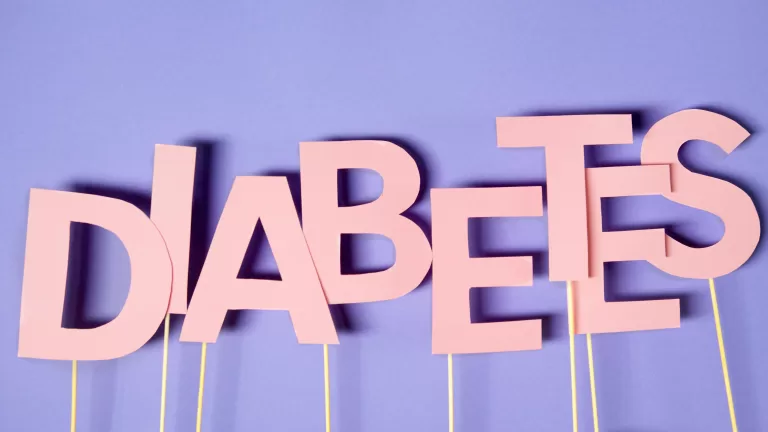Uncovering the Truth About PMDD
Premenstrual Dysphoric Disorder (PMDD) is a severe form of premenstrual syndrome (PMS) that causes intense emotional and physical symptoms. It typically begins 7–10 days before menstruation and subsides a few days after it starts. Affecting 5%–8% of women, PMDD is often misunderstood, with limited awareness of its causes and management. In this article, we explore everything you need to know about PMDD.
Premenstrual Dysphoric Disorder
Research estimates that women experience around 481 menstrual cycles in their lifetime1. Factoring in an average of 22 months for two pregnancies and postpartum periods, most women go through approximately 459 cycles during their reproductive years. For those with PMDD, severe symptoms last an average of 6.4 days per cycle—adding up to roughly 8 years of debilitating symptoms over a lifetime. PMDD can result in an inability to function in the daily roles of life. Leading women to miss work, family events, and cause tension and termoil within the home and in relationships. These numbers highlight the significant distress and functional impairment caused by PMS and PMDD, emphasizing their impact as a serious health concern.

Symptoms of PMDD
- Depression
- Hopelessness
- Anxiety
- Irritability
- Indifference
- Loss of pleasure
- Physical symptoms such as bloating, breast tenderness, headache, fatigue, food cravings, and changes in appetite
- Difficulty functioning at work, school, or in relationships
- Suicidal thoughts or behaviors in severe cases
Fun Fact
The terminology for premenstrual disorders has evolved over time. In the 18th century, it was referred to as “menses moodiness,” later changing to “premenstrual tension” in the early 19th century2. By the 1950s, the condition became widely known as “premenstrual syndrome” and “Premenstrual Dysphoric Disorder”. While today’s terms are more medically appropriate and considerate, there’s no denying that the older names for PMS and PMDD had a certain blunt (and slightly hilarious) honesty to them.
Proven Risk Factors of PMDD
Unfortunately, PMDD remains poorly understood. However, research has identified certain risk factors that significantly increase the likelihood of developing the condition.
Obesity and Sedative lifestyle
Research shows a clear link between body mass index (BMI) and the likelihood of developing PMS. For every 1 kg/m increase in BMI, the risk rises by approximately 3%3. Women with a BMI of 27.5 or higher face a significantly greater risk compared to those with a BMI below 20.0. In fact, those with a BMI of 35.0 have a 66% higher risk of experiencing PMS or PMDD symptoms.
A sedentary lifestyle has been linked to a higher risk of developing PMDD4 and other hormonal imbalances. In most cases, inactivity contributes to increased abdominal fat and reduced muscle mass. These factors can disrupt insulin regulation and lead to insulin resistance, which doubles the risk of developing PMDD.

Insulin Resistance
Recent reports indicate that individuals with PCOS and/or insulin resistance are twice as likely to experience PMS, PMDD, and mood disorders, including depression, both during their reproductive years and the transition to menopause5. Elevated insulin levels can prompt the ovaries to produce excess androgens (male hormones), which may disrupt follicle development necessary for ovulation. This disruption can lead to reduced estrogen6 and progesterone production.
Smoking
A review of 13 studies with 25,828 participants found that smoking significantly increases the risk of PMS and PMDD7, particularly for those who started smoking during adolescence. Researchers believe nicotine makes individuals more vulnerable to environmental stress, which becomes even more pronounced before and during menstruation when the body’s ability to manage stress is already reduced.
Additionally, the chemicals in tobacco products have been proven to damage DNA, which can lead to ovarian dysfunction and, in some cases, ovarian failure. These issues contribute to hormonal imbalances, including increased testosterone levels and reduced estrogen and progesterone production.

Speculative Risk Factor
Since PMDD is not yet fully understood, many factors are considered potential risks. Some may contribute to its development, while others might not directly cause PMDD but can worsen its symptoms.
Histamines
Histamine is a naturally occurring amine found in various foods and produced within the body. In women, it is generated in the reproductive system, including the uterus and ovaries. Histamine plays multiple roles, acting as an inflammatory mediator, a neurotransmitter, and a key component in stomach acid production.
Histamines are not considered a cause or risk factor for PMDD, but they are strongly believed to worsen its symptoms.
Genetics
Although no direct genetic link to PMDD has been proven, genetics may play a role. It is believed that women whose relatives, primarily mothers, have PMDD could be at a higher risk of developing the condition. However, scientific evidence has yet to confirm this hypothesis.

Mental Health History
It is believed that women with a history of mental health conditions, particularly those with symptoms similar to PMDD, may be at a higher risk of developing the disorder. However, it remains unclear whether pre-existing mental health issues are merely intensified during the menstrual cycle or if they stem from PMDD itself.
Therapeutic Approaches to PMDD Remission
Premenstrual Dysphoric Disorder (PMDD) can be a life-altering condition, disrupting thoughts, draining energy, and taking control of mental health. Many women with PMDD describe feeling as though they are losing their sanity—until their menstrual cycle begins, bringing relief and a return to normalcy. The good news is that PMDD is not something you have to endure indefinitely. Natural methods can help heal your body, regulate hormones, and significantly reduce—or even eliminate—symptoms. However, achieving this requires commitment, effort, and discipline.
Muscle Mass and Weight Loss
This one is vital! Skeletal muscle is the main tissue where insulin helps move glucose (e.g carbs) from the bloodstream into cells. Muscle mass plays a key role in controlling blood sugar by storing glucose as glycogen. When insulin binds to muscle cell receptors, it triggers a process that moves glucose transporters (GLUT4) to the cell surface8, allowing glucose to enter. Muscle contractions also boost this process, increasing insulin sensitivity and glucose absorption.
Simply put, muscle and insulin work together to lower blood sugar by clearing excess glucose from the bloodstream. This helps the body use insulin effectively and reduces the risk of insulin resistance, which causes hormone disregulation, leading to PMDD.

Furthermore, lean muscle mass is metabolically active9, meaning it burns more calories than fat, even at rest. In fact, muscle burns more calories per kilogram than any other tissue in the body. Simply put, muscle acts as a natural fat-burning machine—the more you have, the more calories your body burns throughout the day, even when you’re not working out. As you increase muscle mass, you will decrease fat stores and lose weight caused by excess fat.
Whole Food Lifestyle
The truth is, you are what you eat. If your diet is filled with processed foods, your body won’t function properly. Poor nutrition can lead to issues like fatigue, brain fog, chronic health conditions, and debilitating menstrual cycles. If you are consuming products that your body does not recognize as real food, it will not function effectively.
The best approach is to focus on whole foods, meat, vegetables, and fruit as your primary source of nutrition. If you include processed foods, choose wisely—not all are harmful. For example, sugar-free, oil-free peanut butter is technically processed but doesn’t contain the harmful chemicals and vegetable oils that can disrupt your health and hormones over time. Similarly, dark chocolate (78% or higher) is a processed food that can be a healthy choice. The key is to avoid ultra-processed foods, which contain harmful chemicals, sugar, refined carbs, artificial dyes, and preservatives—ingredients known to disrupt hormone balance and overall well-being.

Supplementation
Research suggests that certain supplements may help reduce PMDD symptoms. Consuming cruciferous vegetables or taking DIM (diindolylmethane), which contains phytoestrogens, can help support estrogen balance. Iodine is another beneficial supplement, as it helps regulate estrogen levels.
One of the most important supplements for PMDD is vitamin D, which has anti-inflammatory properties and helps regulate calcium, contributing to overall hormonal balance. If supplementing with vitamin D, a daily dose of 10,000–20,000 IU is recommended for optimal benefits.
It’s important to remember that supplements cannot compensate for a poor diet or a sedentary lifestyle. They are meant to complement healthy habits, not replace them. Taking supplements while continuing to consume ultra-processed foods, sugar, and maintaining an inactive lifestyle is unlikely to produce significant or lasting results. True improvement comes from a combination of proper nutrition, regular movement, and overall healthy choices.

Smoking (tobacco) Cessation
When you smoke a cigarette, you inhale harmful chemicals such as ammonia, arsenic, formaldehyde, carbon monoxide, and lead10. These toxins enter the bloodstream and circulate throughout the body, where they begin to alter DNA. Similarly, smokeless tobacco products contain over 30 carcinogens, including tobacco-specific nitrosamines (TSNAs), arsenic, beryllium, cadmium, nickel, chromium, nitrite, and nitrate. Once absorbed into the bloodstream, these chemicals damage DNA, leading to ovarian dysfunction and hormonal imbalances.
Quitting tobacco is challenging, but support is available. Various support groups and resources can help you successfully break free from smoking and other tobacco products.
Uncovering the Truth About PMDD
The reality of PMDD is that it can be a debilitating and often underestimated condition. However, the good news is that you don’t have to suffer forever. With the right lifestyle changes, PMDD symptoms can be significantly reduced or even eliminated naturally.
When making these changes, remember that it’s okay to start small. Begin by incorporating daily walks and gradually removing processed foods from your home. A helpful strategy is to consume the processed foods you already have but commit to not repurchasing them. If unhealthy options aren’t available in your home, you can’t be tempted to eat them.
If you use tobacco products, start researching resources to help you quit. Breaking free from tobacco is a mental journey, and it’s okay if it takes time to prepare yourself. Just as an unhealthy lifestyle doesn’t develop overnight, a healthy one doesn’t have to either. Be patient, stay committed, and make a disciplined effort toward better health. With time and consistency, the nightmare of PMDD can become a thing of the past.

Supporting Research
- Hylan TR, Sundell K, Judge R. The impact of premenstrual symptomatology on functioning and treatment-seeking behavior: experience from the United States, United Kingdom, and France. J Womens Health Gend Based Med. 1999 Oct;8(8):1043-52. doi: 10.1089/jwh.1.1999.8.1043. PMID: 10565662. ↩︎
- Mishra, S., Elliott, H., & Marwaha, R. (2023, February 19). Premenstrual dysphoric disorder. U.S. National Library of Medicine. https://www.ncbi.nlm.nih.gov/books/NBK532307/ ↩︎
- Bertone-Johnson ER, Hankinson SE, Willett WC, Johnson SR, Manson JE. Adiposity and the development of premenstrual syndrome. J Womens Health (Larchmt). 2010 Nov;19(11):1955-62. doi: 10.1089/jwh.2010.2128. Epub 2010 Sep 27. PMID: 20874240; PMCID: PMC2971655. ↩︎
- Dallal CM, Brinton LA, Matthews CE, Pfeiffer RM, Hartman TJ, Lissowska J, Falk RT, Garcia-Closas M, Xu X, Veenstra TD, Gierach GL. Association of Active and Sedentary Behaviors with Postmenopausal Estrogen Metabolism. Med Sci Sports Exerc. 2016 Mar;48(3):439-48. doi: 10.1249/MSS.0000000000000790. PMID: 26460631; PMCID: PMC4861700. ↩︎
- Monteleone P, Luisi S, Tonetti A, et al. Allopregnanolone concentrations and premenstrual syndrome. Eur J Endocrinol. 2000;142(3):269–273 ↩︎
- Suba Z. Interplay between insulin resistance and estrogen deficiency as co- activators in carcinogenesis. Pathol Oncol Res. 2012 Apr;18(2):123-33. doi: 10.1007/s12253-011-9466-8. Epub 2011 Oct 9. PMID: 21984197. ↩︎
- Choi SH, Hamidovic A. Association Between Smoking and Premenstrual Syndrome: A Meta-Analysis. Front Psychiatry. 2020 Nov 26;11:575526. doi: 10.3389/fpsyt.2020.575526. PMID: 33324253; PMCID: PMC7725748. ↩︎
- Human Health Co. (2025, January 15). The Powerful Link Between Muscle Mass and a Healthy Life. Human Health Co. https://humanhealthco.com/the-powerful-link-between-muscle-mass-and-a-healthy-life/ ↩︎
- Slentz CA, Houmard JA, Kraus WE. Exercise, abdominal obesity, skeletal muscle, and metabolic risk: evidence for a dose response. Obesity (Silver Spring). 2009 Dec;17 Suppl 3(0 3):S27-33. doi: 10.1038/oby.2009.385. PMID: 19927142; PMCID: PMC3762482. ↩︎
- What’s in a cigarette? American Lung Association. (2023, May 31). https://www.lung.org/quit-smoking/smoking-facts/whats-in-a-cigarette#:~:text=There%20are %20approximately%20600%20ingredients,cancer%2C%20and%20many%20are%20toxic. ↩︎







